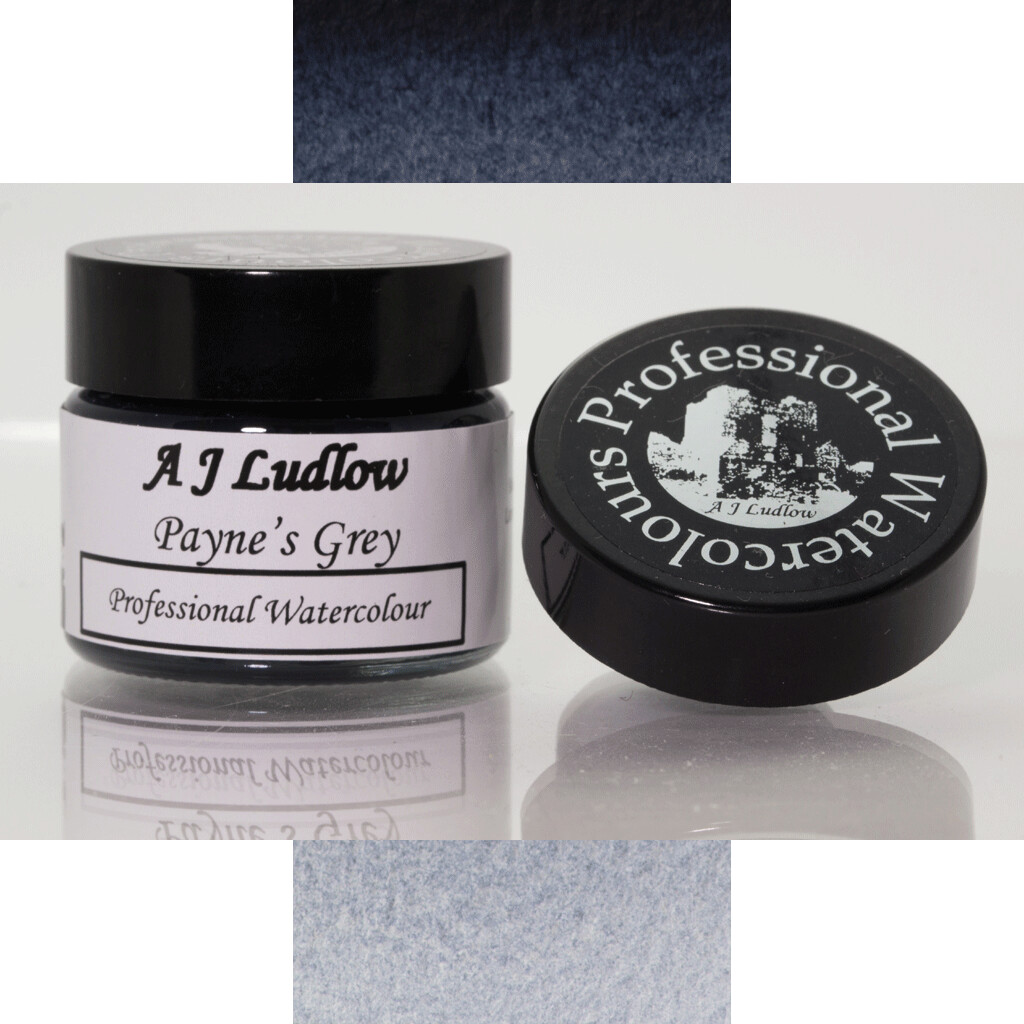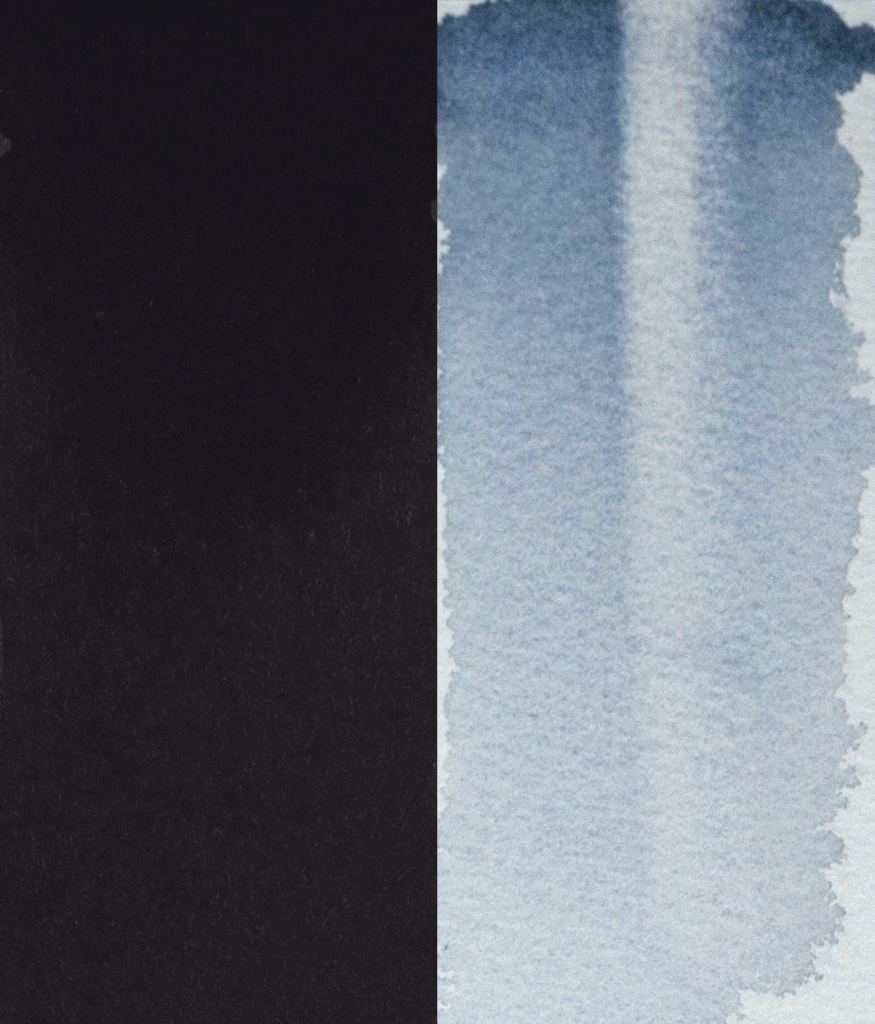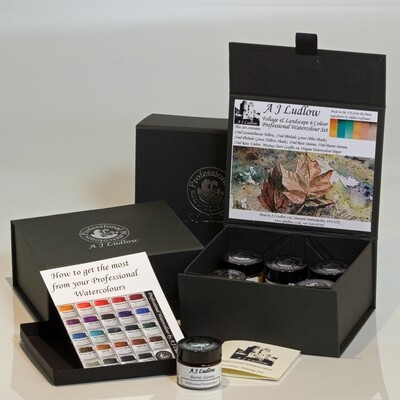Free Delivery when you spend over £50*
*Free delivery within the UK (excluding the Channel Islands) when the order is over £50*
A J Ludlow Payne's Grey Professional Watercolour
Payne's Grey is just one of the bright and exquisite Professional Watercolours from A J Ludlow. This Special Limited Edition watercolour has excellent permanence and light fastness, ensuring that this watercolour’s properties are exceptional. As with all our fine-art materials, Payne's Grey watercolour is lovingly handmade in the UK by a skilled artisan from the best ingredients and finest pigments.
Payne's Grey professional quality watercolour is supplied in a 15ml glass jar, because:
- The watercolour’s wet mass tone can be seen through the walls of the jar;
- The colour can be easily transferred from the jar to the palette with a palette knife.
But more importantly, there is no need for unnecessary additives or formulation changes to make processing in our colour manufacturing workshop easier, allowing the Payne's Grey watercolour made by A J Ludlow, to be at the highest pigment concentration and the pigment’s unique properties to be uncompromised. Anything less would be at odds with the brilliance and performance demanded of a professional quality watercolour range.
This Professional Watercolour is prepared using two inorganic pigments. The pigments have been selected for their purity, high tinctorial strength, exceptional light fastness and their match to the traditional blue-grey colour of Payne's Grey. They afford a transparent watercolour (as can be seen in the figure 1a below).
Figure 1: Assessment of (a) the opacity/transparency and (b) staining power of A J Ludlow Payne's Grey Professional Watercolour*.
The staining power of Payne's Grey watercolour is on the low side and so the watercolour is easily lifted out (see figure 1b above).
This watercolour has a fluid consistency and is easily transferred to the watercolour palette using a clean spatula or palette knife. When painted out, A J Ludlow Payne’s Grey watercolour naturally granulates, creating interesting texture in the painting.
Payne’s Grey has been described as “the colour of English rain” (George Shaw in O’Hagan, 2011), and much like the widespread nature and variety of rain in England, Payne's Grey is a "core-colour" amongst artist paint makers, each with a slightly different shade. This is not surprising as there seems to be little consensus on the pigments used; mixtures range from two or three pigments (although one Payne’s Grey has seven listed), being predominately based on blue (Phthalocyanine or Ultramarine) with carbon black (and in one, an addition of quinacridone violet). Such diversity is unexpected, especially as the colour is named after its inventor, William Payne. However, as there is no evidence that a record was made at the time Payne was using the grey tint in his watercolour paintings, the exact pigment composition of the original mixture as first prepared by him, may be different to the earliest reference to a recipe published in 1896, more than a century after he first began to exhibit his watercolour paintings (around 1780).
In fact, very little is known of the life of William Payne, except for a few biographical notes (published in 1896 and 1922) and the paintings he exhibited and sold. Even the Tate has very little more light to shed on his life, referring the reader to the Wikipedia entry, “William Payne (painter)” instead (Tate, 2023). The Wikipedia entry (Wikipedia 2023) borrows from an earlier account of his life written by Basil Long, published in January 1922 (Long 1922) and the watercolourist’s entry in the Dictionary of National Biography (Monkhouse, 1896), which states “…the invention by which he is best known is a neutral tint composed of indigo, raw sienna, and lake. A compound pigment called Payne's grey is still sold by artists' colourmen”, giving a hint as to the make-up of Payne's neutral grey. Other recipes for Payne’s Grey listed by Eastaugh et al (Pigment Compendium, page 299) include, "ultramarine, a carbon-based black and sepia, ochre or a red lake". The colour is listed in Field’s Chromatography (Salter 1869) and is described as follows:
“( Payne's Gray ) resembles the preceding ( Neutral Tint ) in being a compound colour and liable to assume a grey cast by time, but differs from it in having more lilac in its hue, and being therefore of a warmer tone. Giving by itself a clear violet shadow, it may be rendered more neutral by a small portion of burnt Sienna, an admixture which, whether the gray or Sienna predominates, affords useful tints. Compounded with light red or Vandyke brown, the gray is good for shipping and sails, or the stems and branches of trees; while with gamboge or aureolin it is suited to glossy leaves in high light, also to very cold tones in foregrounds, herbage, &c. Yellow ochre, light red, and Payne's gray form a mixture for banks and roads; the ochre, gray, and sepia, a most beautiful tint for stones; and brown madder and the gray, a fine shade for the black head and feet of cattle. Alone, the gray is serviceable for slate; and compounded with light red, for bricks or tiles in shadow ( sic ).”
In “A Descriptive Handbook of Modern Water Colour Pigments” by J Scott Taylor (1887), the author also refers to Payne’s Grey as “..a similar compound pigment. It is more lilac in hue, but otherwise resembles Neutral Tint in properties” and of Neutral Tint he points out that “..It is not very permanent, as the gray ( sic ) is apt to become grey by exposure..” This reference to the fugitive nature of Neutral Tint (and Payne’s Grey) would suggest the use of a crimson or red lake pigment (possibly based on alizarin) being used to achieve the lilac colouration in the undertone.
How lilac in colour Payne’s Grey was, maybe difficult to quantify now, unless samples of the colour still exist that have not been exposed to light. However, this watercolour's hue has been matched to a wash sample of Payne’s Grey in Scott Taylor’s Handbook (1887). Although not a perfect solution, it is hoped that this colour is a good representation of William Payne’s original neutral tint.
In the A J Ludlow Payne’s Grey Professional Watercolour, the pigments used are pure and the tinctorial strength is very strong and so is best used sparingly when initially mixing with other colours.
Pigment Details: Mixed
Reference
Salter, TW, “FIELD'S CHROMATOGRAPHY; OR TREATISE ON COLOURS AND PIGMENTS AS USED BY ARTISTS. AN ENTIRELY NEW AND PRACTICAL EDITION; REVISED, REWRITTEN, AND BROUGHT DOWN TO THE PRESENT TIME. SALTER'S EDITION”, Winsor and Newton, London, 1869
Scott Taylor J, “A Descriptive Handbook of Modern Water Colour Pigments”, Winsor and Newton, London, 1887
O’Hagan S, “George Shaw: ‘Sometimes I look at my work and its conservatism shocks me’, The Guardian, Sun 13 Feb 2011.
Accessed on 31/12/23: https://www.theguardian.com/artanddesign/2011/feb/
Tate Website
Accessed on 31/12/23:
https://www.tate.org.uk/art/artists/william-payne-...
Wikipedia "William Payne (painter)"
Accessed on 31/12/23: https://en.wikipedia.org/wiki/William_Payne_(painter)
Long B S, “William Payne, Watercolour Painter, Working 1776-1830”, Walker’s Quarterly, No6, Walker’s Galleries, London, 1922
Monkhouse W C, “Payne, William (ft. 1800)”, Dictionary of National Biography, 1885 – 1900, Vol 44, Editor Lee S, Smith, Elder & Co, London, 1896
Footnote:
*Details of how each watercolour is tested are given in the May 2021 ARTicle “Testing and Assessing the Properties of Watercolours – Part 1 ” (see also Part 2 of the ARTicle, which was published in June 2021).






